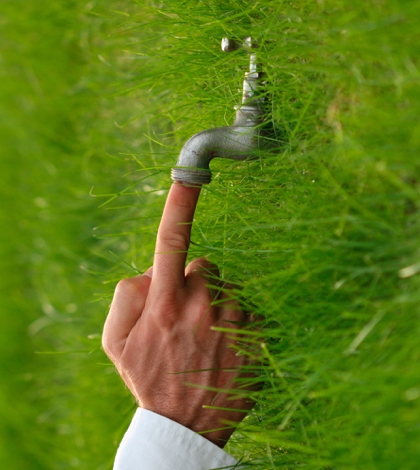A new draft plan for water conservation in California was rolled out this week by the Department of Water Resources, the State Water Resources Control Board, the Public Utilities Commission, the Department of Food and Agriculture and the Energy Commission toward achieving long-term, efficient water use and meeting drought preparedness goals. The plan’s fundamental premise is that efficient water use helps all of California better prepare for longer and more severe droughts caused by climate change. The new plan stresses planning efforts and a pro-active vs. reactive stance in water conservation for the state.
With 75 percent of the state still locked in severe drought conditions and the state entering its sixth year of scant precipitation – though last year saw near average rainfall – the plan seeks permanent changes to water use to boost efficiency and prepare for more limited water supplies. These practices will help achieve a top priority in the Governor’s Water Action Plan – to “Make Conservation a California Way of Life.”
“Californians rose to the challenge during this historic drought and recognized that conservation is critical in the face of an uncertain future. This plan is about harnessing the creativity and innovation that Californians have shown during the driest years in state history and making water conservation a way of life in the years ahead,” said Mark W. Cowin, director of California Department of Water Resources. “This plan will help make permanent changes to water use so California is better prepared for whatever the future brings.”
The new plan capitalizes on the success of mandatory water restrictions during California’s severe drought and works toward developing long-term water conservation measures that will ensure all communities have sufficient water supplies. A new report from UCLA projects that one of California’s largest sources of water supply — the Sierra Nevada snowpack — is likely to drop 50 percent by the end of the century due to climate change.
In announcing the new plan the state will shift from statewide mandates to a set of conservation standards based on local circumstances, including population, temperature, leaks, and types of commercial and industrial use. The plan will take into consideration such specifics as those communities in hotter and drier climate zones will receive irrigation allowances that reflect evaporation levels.
“The last few years provided the wake-up call of all wake-up calls that water is precious and not to be taken for granted,” said Felicia Marcus, Chair of the State Water Resources Control Board. “Californians rose to the occasion collectively during the drought. We can build on that success and now prepare for a more unpredictable and disruptive future marked by a changing climate – and do it equitably and cost effectively.”
Key points in the new plan include:
- Permanent bans on wasteful practices, such as hosing driveways and excessively watering lawns.
- Technical assistance and financial incentives for water suppliers to implement leak prevention, detection, and repair programs.
- Collecting information about innovative water conservation and water loss detection and control technologies.
- Requiring agricultural water suppliers to quantify water use in their service areas and describe measures to increase water use efficiency.
- Full compliance with water use targets for urban water suppliers by 2025.
- Planning and preparing for continued and future drought and water shortages.
While some elements of the plan can be implemented under existing authorities, other portions of the plan will necessitate working with the Legislature for new and expanded authority. The main objectives of the plan and its recommendations seek to implement Governor Jerry Brown’s Executive Order to use water more wisely, eliminate water waste, strengthen local drought resilience, and improve agricultural water use efficiency and drought planning.
The State Water Board has already taken action to maintain mandatory reductions in communities that could not verify they have enough water supplies to withstand three more years of severe drought. In January, the State Water Board will also consider whether it must extend its existing emergency water conservation regulations, as required by Governor Brown’s recent executive order.
 California Water News Daily Your Source For Water News in California
California Water News Daily Your Source For Water News in California


